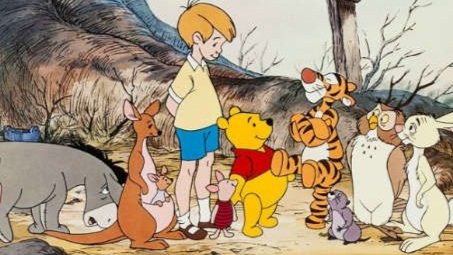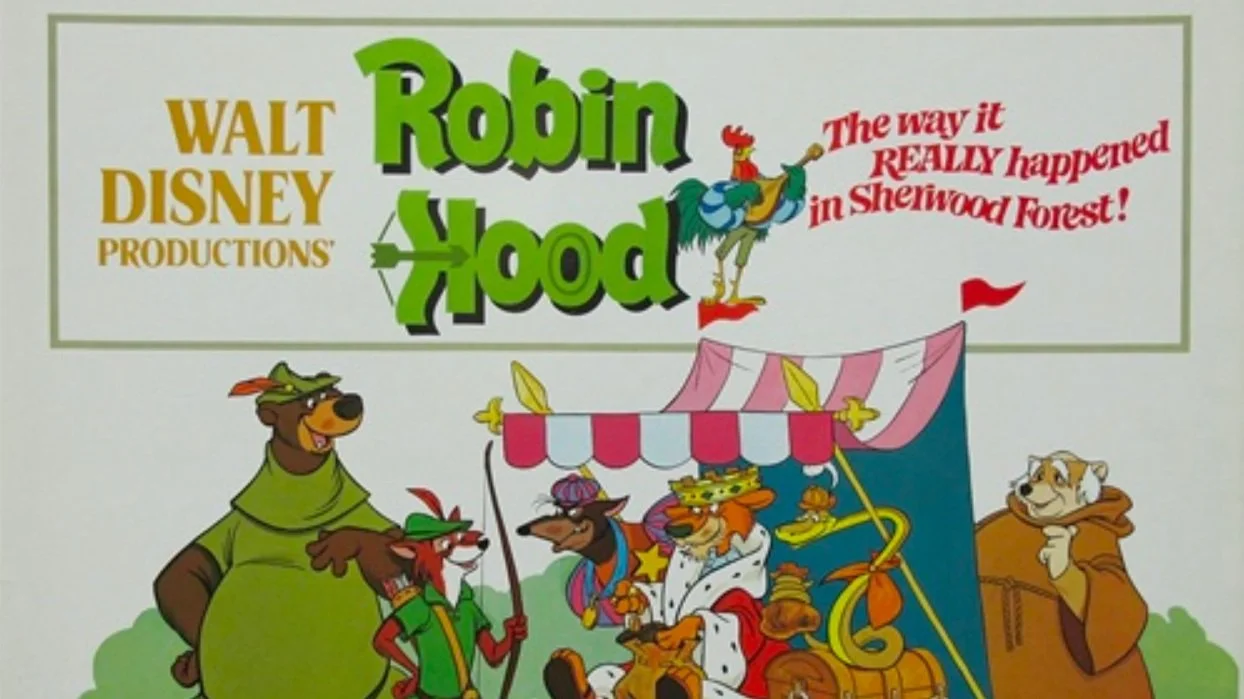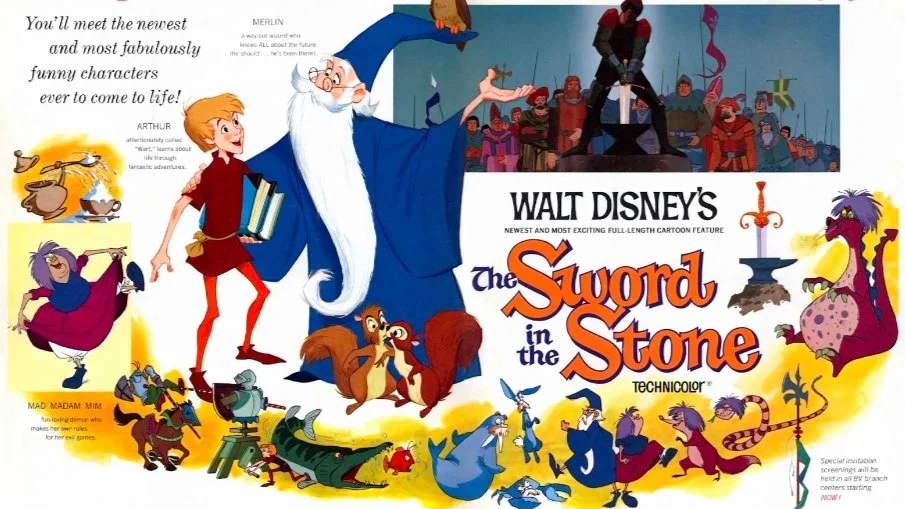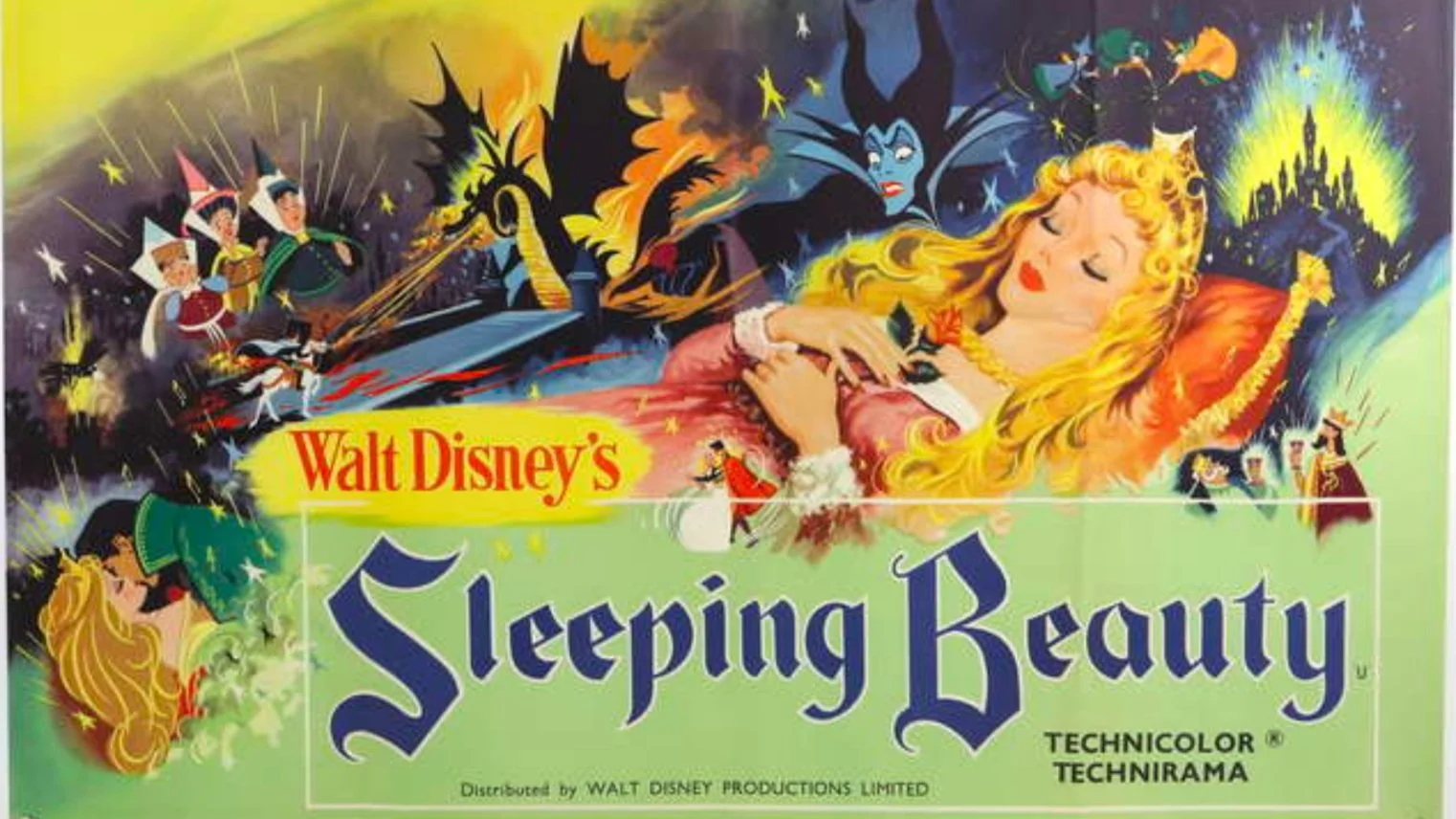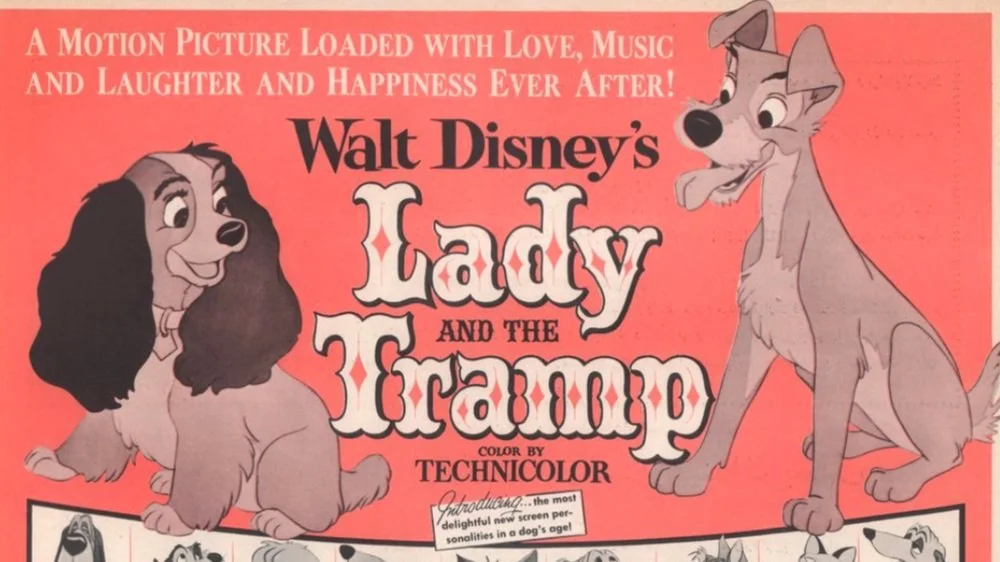Old Films for the New Depression: Meet John Doe
When I began to re-watch Meet John Doe, I was expecting to write a very similar piece to Mr. Deeds Goes to Town. Both films were directed by Frank Capra and written by Robert Riskin. I had remembered that this film was darker, but I was surprised to see just how dark it was. I was also surprised by how morally gray the film was. Usually, in a Capra film, you get social commentary (courtesy of the screenwriter, in this case, Riskin) wrapped in enough Americana (by Capra) to make the commentary palatable to a 1940s American audience.
The film opens with shots of Idealized 1940s White American life. These shots, notably, are not included in the shooting script. There are white babies in cradles, working people, cheerful music, crowds, and people leaving baseball games. After that, we transition into Riskin’s point of view, where the shooting script begins. A man is taking down the sign for a newspaper which reads “The Bulletin: a free press means a free people.” It is replaced with “The new bulletin, a streamlined newspaper for a streamlined era.” After all, who needs freedom when you can have efficiency?
Our story begins at the newspaper offices of The Bulletin. Under the new management, longtime reporters are fired unceremoniously, with a whistle. A columnist at The Bulletin and our female protagonist, Ann Mitchell (Barbara Stanwyck), isn’t going down without a fight. She offers to lower her salary, change her column, anything to keep her job. The new editor, Henry Connell, tells her they need fireworks, and she has one last column to turn in.
An irate Mitchell writes a fake letter from an unemployed “John Doe” and submits it as a letter to the editor. In the letter, “Doe” claims he will commit suicide by jumping off the roof of City Hall on Christmas Eve, because of society’s ills.
Mitchell’s made-up letter effectively goes viral among newspaper readers, causing quite a stir. Connell brings Mitchell back to the office and asks her for the original letter John Doe wrote. Mitchell confesses that she made the whole thing up, but points out that they can get months of circulation by publishing letters from “John Doe.”
The Bulletin’s competitor, The Chronicle, quickly catches on, calling the John Doe story “palpably phony.” In order to hide the truth, Connell re-hires Mitchell so she can pen a series of John Doe articles. A crowd of men claiming to be the real John Doe flood into The Bulletin’s offices, and Mitchell and Connell choose the handsome John Willoughby (Gary Cooper) to play the role of John Doe. Willoughby is a former baseball player who can’t afford surgery for his injured arm, who travels around in boxcars with his friend “The Colonel.” As an aside, “The Colonel” is quite an interesting character, an antisocial cynic who wants to be left alone; he feels that money is the root of all problems—almost the antithesis of a Capra hero.
In exchange for pretending to be Doe, Willoughby gets a new suit of clothes, a luxury hotel suite to share with the Colonel, and $50; the equivalent of just about $900 in 2021. The Bulletin also agrees to fix Willoughby’s arm so he can play baseball again.
This is a story about fake news, although this pales in comparison to what Fox News puts on nightly. Media-as-propaganda is Riskin’s central concern, which partly stems from his visit to Nazi Germany in 1939. According to Riskin’s daughter, Victoria, Riskin saw “first-hand evidence of the euphoria Hitler had created in Germany and the rising war fever that accompanied it. He came back to Hollywood troubled by the threat of Nazism.” While Capra and Riskin were trying to decide what story to make, Riskin “remembered a story, Reputation, which he had read…years earlier. It had very strong elements of what he had been thinking about ever since his trip…including the dangers of leaders who, while preaching populism, manipulate the public. It was happening in Germany, but the danger was universal. Could it happen even in America?”
It didn’t happen in the 1930s or 1940s, but the rise of modern misinformation began, as many evil things have, under President Ronald Reagan. Concerns about media fairness did rise in the 1920s, when radio was popularized. This ultimately led to the Fairness Doctrine of 1949, which required fact-based programming on controversial topics, including “reasonable opportunity for opposing viewpoints.” In essence, programming had to be factual and provide a range of views on any given issue. Additionally, the rule required broadcasters to alert anyone who was personally attacked in their programming and give them a chance to respond. Naturally, most right-wing organizations despise the Fairness Doctrine. Under Reagan, the FCC published a report in 1985 alleging that the Fairness Doctrine actually interfered with thorough and balanced coverage of controversial issues, because broadcast journalists were not able to editorialize to their hearts’ content. Right-wing organizations have argued that their freedom of speech was being infringed upon, and that alternative perspectives and voices would be silenced. It is important to note that The Fairness Doctrine would likely not have applied to Fox News, because it applied only to broadcast, rather than cable TV. What the 1987 suspension of the Fairness Doctrine directly created, however, was modern right-wing radio.
Dr. Paul Matzko, author of The Radio Right: How a Band of Broadcasters Took on the Federal Government and Built the Modern Conservative Movement, who works for the Cato Institute, laid out in an interview with Vox how the suspension of the Fairness Doctrine led to right-wing radio. “You really couldn’t have modern talk radio, or any overtly political talk show, under a rigorously enforced Fairness Doctrine,” Matzko argues. He also pointed out that even before the Fairness Doctrine was done away with, cable showed what could happen without the influence of the Fairness Doctrine. Cable was exempt from many of the FCC rules. Beginning in the 1970s, under President Jimmy Carter, the Fairness Doctrine was not consistently enforced. However, when it was completely gone, there was what Matzko called, “an explosion in talk radio and a wave of highly political, highly biased radio programs. This is really the birth of what we think of as modern talk radio.” And this new right-wing radio created Fox News. According to Matzko, “Talk radio built an audience of millions of people who were only interested in conservative points of view, and then Rupert Murdoch comes along and says, 'How about we have TV for these people as well?'” As far back as the 1960s, there was a right-wing ecosystem that ignored all other perspectives. Talk Radio expanded what already existed, presumably bringing in more people to feed conspiracy theories. According to Matzko, it was “built through newsletters and newspapers and other forms of media. What talk radio makes possible is way more of this.”
In Meet John Doe, you get to see the power of radio, particularly when it’s the main form of mass media. The John Doe message doesn’t spread nationwide until Willoughby gets on the radio. Right before his first on-air speech, Willoughby has an opportunity to put an end to the whole thing. Before he gets on the radio, the Chronicle offers him $5,000 to admit he didn’t write the John Doe letter. The money would be enough for Willoughby to fix his arm and go into baseball again. But Willoughby is falling for Mitchell, even if he doesn’t quite realize it yet. He delivers the speech as written, but runs away as soon as it’s over. So, he and the Colonel ride the rails until they get to a small town called Millville. Willoughby is recognized at the diner as John Doe and brought to Millville’s City Hall. Although Willoughby has planned to leave the whole John Doe schtick behind, it’s too late.
The residents of Millville have formed a “John Doe club,” and decided to help the people in their town. Willoughby is visibly moved by their efforts and their newfound sense of community, and care for their neighbors. So, he agrees to go back and take on the John Doe name again.
This seemingly-grassroots John Doe movement spreads across the country, buoyed by support from the owner and publisher of the Bulletin, D.B. Norton. There’s something discomfiting in the notion that just by helping your neighbor, you can get them off of relief. There’s a willful simplification that’s either very clever or very stupid of Riskin. It could be a poorly-written critique of bureaucracy in a call to help your neighbor, or a clever way of making the viewer uncomfortable.
However, Norton has a more sinister goal. He plans on using the John Doe clubs to support his run for the presidency. And as we know, no right-wing candidate has ever capitalized on media movements, such as birtherism, and used that to position themselves as a populist candidate.
I would also like to quickly point out that although John Willoughby and the John Doe clubs have some noble ideas, it doesn’t change how similar this situation is to Trump. Trump’s candidacy, I assume purely by accident, brought some important and oft-ignored problems to the forefront of our political conversation. NAFTA, and much of neo-liberal free trade, has forced down wages for the working class and destroyed manufacturing jobs in the United States. Trump didn’t mean anything he said, but he brought these issues the media attention they deserved.
A John Doe rally is scheduled and John Doe clubs from across the country are coming to see Willoughby speak. Norton has Mitchell write a speech in which Willoughby announces the formation of the John Doe political party, and endorses Norton as the presidential candidate.
Willoughby, however, has bought into the actual John Doe philosophy, and is horrified when he finds out what Norton’s plan has been. Willoughby tries to denounce Norton and expose the plot at the rally, but Norton has sent out special editions of the Bulletin outing Willoughby as a fraud. Norton claims that the whole newspaper was duped by Willoughby, and then cuts off the microphone before Willoughby has a chance to defend himself. This begets a chilling scene reminiscent of Nazi rallies. John Doe’s followers, enraged, turn on him as a mob.
Willoughby wants the John Doe movement to come back “the idea is still good,” he says, and decides he should commit suicide by jumping off the roof of City Hall on Christmas Eve, just as the original John Doe letter said he would. But, at the end, when former members of the John Doe club and Mitchell beg him not to, Willoughby decides not to kill himself, and carries Mitchell, who has fainted, in his arms, and out of the building.
This film, much like real life, is complicated. Were there good sentiments espoused by the John Doe movement? Yes. Was it dangerous that a movement was started on a lie? It always is.
Is it good that we have the internet and there are so many ways to spread information and reach other people ? Yes. Is the amount of misinformation spreading threatening our democracy? Definitely. It threatens our lives directly and indirectly. Online misinformation is the reason people think the COVID-19 vaccine contains a microchip so Bill Gates can track you. It doesn't feel like there's a way to unring that bell, or undo the damage this has all done. But us ordinary John Does can do something, if we really want to. As much as I hate to offer a solution rather than endlessly criticize, there is a small way we can all help. If you are able to, start paying for your news again, particularly local news. If you're like me, and your local newspaper is, say, The New York Times or The Washington Post, you can also donate to organizations that support local news. It's easy to write off people who believe crazy conspiracy theories, but some of them are good people, who need a chance to learn and grow. (I know, I'm related to a few of them.) Support local news, and have sympathy for your crazy relatives. At the end of the day, these lies are hurting them too, just like they hurt the John Doe supporters.




